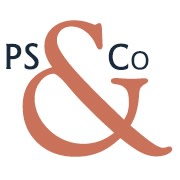Charles Baudelaire
Les Paradis artificiels. Opium et haschisch, 1960
Paris: Poulet-Malassis et de Broise
First edition. Harry Crosby's copy, in his binding and with ex-libris, plus handwritten sonnet, inscribed hieroglyphs, and possible bloodstain.
1955
Octavo. iv, 304pp. Baudelaire's treatise on opium and hashish has spiritual overtones, advocating for substance use as a means of self-actualization and enlightenment. The subject and its splenic, proto-modernist author...
Octavo. iv, 304pp. Baudelaire's treatise on opium and hashish has spiritual overtones, advocating for substance use as a means of self-actualization and enlightenment. The subject and its splenic, proto-modernist author are apt for Crosby, an American expatriate who, with his wife Caresse, spent much of the 1920s under the influence of substances, occult spiritualities, or both. Crosby's affection for, and identification with, Baudelaire was long and enduring. Note, for example, the poem Crosby composed in his diary in honor of Baudelaire's birthday: "I think I understand you Baudelaire/With all your strangeness and perverted ways/You whose fierce hatred of dull working days/Led you to seek your macabre vision..." Look also to the verso of the title page, on which Crosby wrote the (apparently unpublished) sonnet, "Golden Future." Crosby, who hailed from a wealthy Boston Brahmin family, used his wealth to develop a salon of sorts and to start the Black Sun Press. The Press was conspicuous among other modernist small presses for its commitment to a "fine press" style that straddled the handicraft ethos of Arts & Crafts outfits (the Doves, the Cuala), the avant-garde publication practices of poet's presses (Hours Press, POOL), and the slick modern look of commercial French publishers (Gallimard). The Press published an impressive cross-section of European and American modernists, including Gertrude Stein, Hart Crane, D. H. Lawrence, Eugene Jolas, and James Joyce. Crosby used the Press to publish his own esoteric, diabolic poetry. Apt, then, is the possible bloodstain to the margin of page 65. At the rear flyleaf is a series of three hieroglyphs, almost certainly relevant to Crosby's personal cosmology. Sun motif embossed to front flyleaf. Bound in Crosby's personal binding of brown calf with gilt rules and rolls, with spine in six compartments including onlaid leather label. To the upper cover is a gilt stamp of the Crosbys' crest, with "Harry/Caresse" arranged in a cross. This arrangement is also used at the ex-libris at the front pastedown and handwritten above the sonnet (it was a regular motif, also used on a tombstone commissioned by Crosby). Original wrappers bound in. Mild rubbing to edges, else a near fine copy of uncanny provenance.




